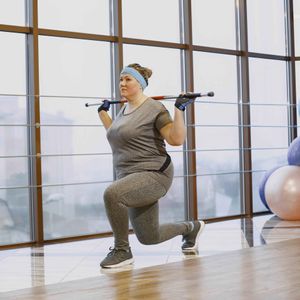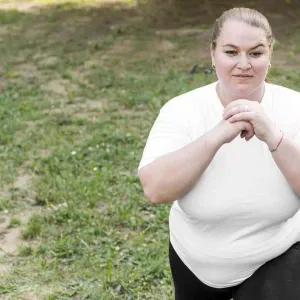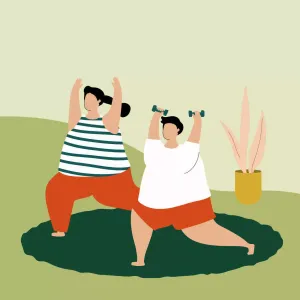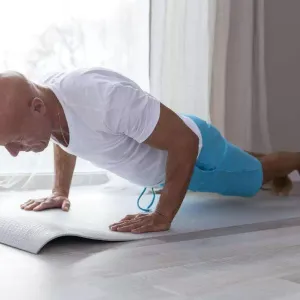

Our Review Process
Our articles undergo extensive medical review by board-certified practitioners to confirm that all factual inferences with respect to medical conditions, symptoms, treatments, and protocols are legitimate, canonical, and adhere to current guidelines and the latest discoveries. Read more.
Our Editorial Team
Shifa Fatima, MSc.
Author
Dr. Apoorva T, MHM.
MEDICAL ADVISOR
Low-impact Exercises for Seniors
Healthcare and fitness experts recommend that people exercise for at least 150 minutes weekly. It is essential to elevate the heart rate and maintain our physical wellbeing. While performing any exercise at a young age is easy, the same cannot be done once one approaches old age. Seniors generally experience health problems, joint problems, improper balance, inability to stand for longer, and making fast movements can be considered the most common problems.
It is why professionals recommend low-impact exercises for seniors. If you are new to exercising in old age or don’t know some effective exercises that are safe yet impactful, this article is all you need. Keep reading until the end, and you will have a ready list of easy workouts that can be performed at home.
Table of Contents
Benefits of Low-impact Workout for Seniors
A low-impact workout is one that doesn’t put too much pressure on your body and joints, making it easier for beginners and seniors. If you suffer from health problems related to connective tissues, bones, and joints, low-impact exercises can be perfect as they are not hard on your body. Although people with good health can also perform low-impact workouts, they may find it challenging to achieve their target heart zone. But seniors can gain massive health benefits from low-impact workouts, especially the elders diagnosed with osteoporosis and osteoarthritis.
Experts suggest low-impact workouts can be as impactful and beneficial as high-impact workouts like running or performing aerobics. If the elderly start performing easy, low-impact workouts for seniors covered in this article, they can significantly lower their risk of heart disease. Regularly performing these exercises for an extended period can also lead to the recovery and healing of damaged joints. Additional benefits of low-impact workouts include improving cardiovascular health, improving body balance and coordination, boosting energy levels, enhancing bone density, improving sleep quality, and sharpening cognitive functions. Seniors can also notice their stress levels reducing with regular exercise.
Best Low-impact Workout for Seniors
Now that you’re aware of what a low-impact workout is and its benefits for seniors, let’s quickly explore some easy yet highly effective lower body exercises for seniors shared below.
- Cat-Camel Stretch
- Speed Drill
- Seated Hamstring Stretch
- Single Leg Stand
- Squats with Alternate Reach
- Step-Ups
1. Cat-Camel Stretch
This simple, low-impact workout helps improve the stability and mobility of your spine. Since you perform this exercise while on all fours, the workout primarily targets muscles in your legs and arms. If you cannot get on your knees and hands because of any health condition, you can still perform it while being seated on a chair. But assuming you are comfortable doing it on the floor, let’s explore stepwise directions to perform this exercise.
- Place a clean mat on the ground, and get on your knees and hands.
- Gently place your knees underneath your hips and hands underneath your shoulder.
- If your knees are sensitive, place a towel under both knees to get some padding.
- Straighten your back like a table top, round your back, and tuck your tail under. Hold this position for at least 10 seconds.
- Slowly open your chest and arch your back. Hold this same position for 10 seconds.
- Return to the original starting position, and keep repeating the same stretch.
This can be repeated 10 times.
2. Speed Drill
Another easy, low-impact exercise for seniors is a speed drill. This exercise is designed to target your leg and core muscles, especially the tendons in your body. If you are a beginner, you can be slow while performing a speed drill and later increase your speed once your body gets ready. To perform a speed drill, follow the below-mentioned steps.
- Draw a ladder design on your floor using tape or chalk.
- Walk through the ‘steps’ you just created on the floor.
- Put your right leg in one square or step, then bring the left leg into the same square.
- Keep following the same step to reach the following squares until you reach the end of the drawn ladder.
You can do this at least three to five times. Speed drill helps build agility and balance.
3. Seated Hamstring Stretch
Seniors need to keep their hamstrings flexible because these muscles connect straight to their knees and hip joints. If you leave your hamstrings without any movement, it can lead to lower back pain. This workout primarily targets the muscles located at the back of your thighs. To perform this exercise, follow the below-mentioned steps.
- Sit on a static chair, placing one foot flat on the floor and extending the other leg straight out with a flexed foot.
- The knee of the foot lying flat on ground should be placed at a 90-degree angle.
- Now gently reach to the flexed foot by leaning forward and stretching your hamstrings.
- Hold this posture for 30 seconds, and then repeat with the other leg.
You can perform it five to ten times on both legs.
4. Single Leg Stand
This simple workout can help improve your overall body balance. It targets multiple muscles simultaneously, including adductors, spinal erectors, quads, hip flexors, and hamstrings. If you are ready to perform a single-leg stand, follow the below-mentioned steps.
- Stand next to a clean wall that you can use for support. A chair would also serve the purpose.
- Keep your legs at hip distance apart, and lift the right foot slowly off the floor. While doing this, remember to keep your standing left leg slightly bent.
- Hold this posture for 30 seconds and try to engage your abdominals to help get a good balance.
- Gently bring your right leg back onto the ground, and repeat the same with the next leg.
You can do this 10 times for each leg. If you want to make it challenging, try performing the steps without taking any support from the wall or chair.
5. Squats with Alternate Reach
Irrespective of your age, squats are always an excellent workout option because it engages all your major leg muscles. Squats with alternate reach are necessary if you want to strengthen your lower body muscles and improve stability. If you are ready to perform this workout, follow the below-mentioned steps.
- Stand with your both feet at a hip distance apart, place your palms down, and hold your arms straight out in the front.
- Gently squat down pretending to sit on a chair, but don’t let your knees bend past your toes. Keep your chest wide.
- If you are a beginner, place a static chair behind you to get some support, but don’t sit on it.
- Once you go down trying to do squats, slowly reach your right hand toward the left and rotate your body slightly to the left.
- Bring your arms and body back to the center, and slowly get up to the starting position.
- Follow the same steps with the other leg and arm, and repeat it ten to fifteen times.
If you want to make it challenging, try performing this workout, keeping lower weights in your hands.
6. Step-Ups
This low-impact workout is designed to boost your body resistance and target your buttocks and leg muscles. Primarily, your hamstrings, quadriceps, and gluteal muscles are targeted with this workout. If you want to perform step-ups, follow the below-mentioned steps.
- Sit in front of a staircase, and step on the first stair using your left leg.
- Lift your right leg gently off the ground, but don’t place it on the next or same stair.
- Hold this posture for one count while your left leg is still on the stair.
- Gently step down with your right leg, followed by your left leg.
Repeat this with the other leg. You can do step-ups 10 to 15 times with each leg.
Improve Your Health & Mobility Using Low-impact Exercises
As seniors, it can be challenging to find the right exercises that are safe yet effective. Some get confused between low-impact and low-intensity exercises. With pain in most joints, performing exercises can be challenging for most. But if you want to keep yourself fit and improve your body strength, balance, stability, mobility, and more, low-impact exercises for seniors can help.
Low-impact exercises are easy on the body and joints but can deliver results equivalent to high-impact exercises. To make your journey easier, six low-impact workouts have been featured in this article. All these exercises are simple to perform and won’t make you vulnerable to any bodily injury. So start practicing the exercises today and notice visible improvements over a period.

FAQs
What is an Example of a Low-impact Workout?
A low-impact workout is the one that has a lesser impact on joints during the exercise. There are multiple low-impact workouts, and cycling, hiking, yoga, pilates, and dancing are some of the most common forms of the low-impact workout. Simple cardio workouts are also low-impact. But if you are a senior, walking can be your best low-impact workout.
Is Walking Considered Low-impact Exercise?
Yes, walking is considered a low-impact exercise and can be done by seniors for notable health improvements. Since walking puts minimal pressure on your joints, it reduces the chances of getting muscle injury or any other bodily injury common in many cases. Simple walking for 30 minutes a day can help you boost your muscle strength, reduce stress, and improve cardiovascular health.
How Do I Start a Low-impact Workout?
You should start by picking the right exercise that aligns with your present health condition. If you are planning to start a low-impact workout, but aren’t sure where to start from, begin with step-ups, cat-camel stretch, speed drill, single leg stand, squats with alternate reach, and seated hamstring stretch. Once your body gets acquainted with these exercises, you can start adding moderate-impact workouts to your routine.
How Long Should a Low-impact Workout Be?
Low-impact workouts are supposed to keep your heart rate at a steady pace of approximately 50% of the maximum ability. An ideal low-impact workout should be at least 30 minutes long. But if you are a beginner and have mostly led a sedentary lifestyle, you can start small and scale later. Beginners can make their low-impact workout sessions to last 15 minutes, which can later be extended to 30 minutes after a few days or weeks.
Disclaimer
This website's content is provided only for educational reasons and is not meant to be a replacement for professional medical advice. Due to individual differences, the reader should contact their physician to decide whether the material is applicable to their case.








